Coastal missile complex "Rubezh"
By the beginning of the seventies, two mobile missile complexes with anti-ship missiles were in service with the coastal forces of the USSR Navy. These were the Sopka systems with the C-2 rocket and the Redoubt complex with the P-35B rocket. The complex based on the C-2 projectile (a modified version of the Kome X-1 aviation aircraft) was already considered obsolete. The newer Redoubt also did not fully suit the military. Because of the large size of the rocket, the self-propelled chassis could only accommodate one launcher without any additional equipment, which required the introduction of a separate control machine into the complex. In new projects of mobile missile systems, it was necessary to solve this problem and place on a single chassis both missiles with launch systems and a radar of target search, control equipment, etc.
The development of a new rocket for a promising complex was considered inexpedient. A new system should be built on the basis of one of the existing products of the latest models. Requirements for placing all elements of the missile complex on one machine have led to the need to use relatively light and small-sized rockets. The P-15M Termite product developed in the mid-sixties corresponded most fully to these requirements.
The new project of the coastal missile complex received the symbol "Frontier". Subsequently, the complex received an index GRAU 4K51. The development of the system was entrusted to the machine-building design bureau (ICD) Raduga, previously a branch of the OKB-155. In addition, some related enterprises were involved in the work. In particular, the Moscow design bureau of machine building was responsible for the development of the new launcher, and the Minsk Minsk Automobile Plant was to provide the base chassis.
The main element of the promising missile complex "Rubezh" was to become the existing cruise missile P-15M. This product was a deep modernization of the base missile P-15 and differed from it by higher characteristics, which were achieved with the help of small modifications of the design and changes in the composition of the equipment. In particular, with the help of these changes, it was possible to increase the maximum firing range from 40 to 80 km. Some other components of the project were also reworked.
The P-15M rocket had an elongated circular fuselage with a lively head fairing and a conical tail section. She received a mid-range trapezoidal wing of a large sweep, equipped with a folding system. In the transport position, the wing console went down and thereby reduced the dimensions of the product. After exiting the launch canister, the automatics had to open the wing and fix it in that position. In the tail part of the fuselage there was a tail in the form of one keel and two stabilizers installed with a large negative V. The tail planes had a trapezoidal shape and a large sweep of the leading edge. The plumage was fixed rigidly and had no possibility of folding.
For control during the flight, the P-15M rocket had to use a set of rudders placed on the planes. On the wing, ailerons were provided for roll control, height control was carried out using the rudders on the stabilizer, and on the keel there was a rudder. All available rudders allowed the rocket to maneuver, maintaining the desired course or aiming at the target.
The power plant rocket "Termite" consisted of two main blocks. For the initial acceleration, exit from the launcher, and a set of march height, a solid propellant SPRD-192 starting engine 29 t was proposed. It was made in the form of a cylindrical block with a nozzle in the tail section and fixtures for mounting on the rocket fuselage. After producing the fuel, the starting engine should have been reset. Further flight was made using a marching power plant.
The P-15M had a C2.722 mid-flight liquid-propellant rocket engine, which operated on TG-02 fuel (self) and an AK-20K oxidizer based on nitric acid. The engine had two modes of operation, acceleration and maintain speed, intended for use at different stages of flight. The task of the engine was to accelerate the rocket to the speed of 320 m / s and to maintain such flight parameters until it hit the target.
The onboard missile control system included an APR-25 autopilot, a RV-MB radio altimeter, an inertial navigation system and one of two types of homing head. The base version of the missile received an active radar seeker of the type DS-M. The second version of the weapon was equipped with a thermal SOS "Snegir-M". The control systems provided an independent launch of the rocket to the target area with the subsequent study of the water area and the search for a target for attack. At the final stage, they, using the GOS, provided guidance of the missile at the target.
The P-15M rocket had a total length of 6,65 m, a body with a diameter of 0,76 m and a wing span (in flight position) 2,4 m. The launch weight of the rocket with the accelerator reached 2573 kg. In the central part of the fuselage there was a place for installing a cumulative high-explosive warhead 4Г51М weighing 513 kg or lighter special ammunition 15 CT power.
Using a radar altimeter, the Termite rocket was supposed to fly at altitudes of no more than 250 m, while the recommended altitudes were within 50-100 m. Cruising speed on the cruise flight was 320 m / s. The fuel reserve was enough for a flight to a distance of 80 km. The detection of a “destroyer” target of a radar homing head was carried out at a distance of up to 35-40 km. Characteristics of thermal seeker were several times lower.
The use of the existing missile by the coastal forces required a self-propelled launcher and a set of relevant equipment. Through the efforts of several organizations involved in the Rubezh project, the 3P51 combat vehicle was created. When designing it, all the basic requirements for the advanced complex, relating to a set of equipment on the base chassis, were taken into account.
As a basis for self-propelled launcher 3P51 was chosen four-axle special chassis MAZ-543. Such a machine, equipped with an 525 hp engine, had a payload of more than 20 t and could be used as the basis for various military and auxiliary equipment. An important feature of the selected chassis was the presence of a large cargo area to accommodate the necessary equipment, which was proposed to be involved in the new project.
Directly behind the cab of the base truck, on the cargo area of the 3P51, was the cab of the operators, made in the form of a KUNG van. Inside the cab were blocks of electronic equipment to search for targets, data processing and rocket control. In addition, a place for laying a lifting mast with the 3Ц51 "Harpoon" radar detection radar was provided in the niche of the roof of the van of the cab. In preparation for combat work, the mast had to be upright and raise the antenna to a height of 7,3 m, ensuring the operation of the station. It should be noted that the cabin equipment of the Rubezh complex was a slightly revised shooting control equipment, borrowed from the rocket boats of the 205U project. Probably, this particular feature of the project led to the fact that the concept of a self-propelled launcher with its own radar and control devices received the unofficial name “boat with wheels”.
Especially for the Rubezh missile system, new KT-161 launchers were developed. They were pentagonal containers with sliding lids. Within such a container, there were short “zero” guides for the installation of rockets. In addition, connectors were provided for connecting the rocket’s onboard equipment with the launcher control devices. The KT-161 container had a length of 7 m and a width of 1,8 m. It was possible to reduce the diameter of the launcher through the use of automatic opening of the wing, which made it possible to reduce the dimensions of the rocket in the transport position.
At the rear of the base chassis, it was proposed to install a lifting-swiveling device with attachments for two KT-161 launch canisters. In the stowed position, both containers should be placed along the chassis, front cover back. In preparation for firing, the automatics rotated the launcher through an angle 110 ° to the right or left of the initial position and raised the container to 20 ° with the subsequent opening of the covers. After that, the start command could follow.
The self-propelled 3P51 launcher is capable of carrying two P-15M missiles and a crew of six. The combat weight of such a vehicle slightly exceeds 40 t. The length of the vehicle in the stowed position is 14,2 m, width no more than 3 m, height - 4,05 m. Depending on the modification of the base chassis, the launcher is capable of speeding up to 60-65 km / h. Power reserve reaches 630 km. After arriving at a combat position, the calculation of the machine should carry out work on the deployment of the complex, which takes no more than 5 minutes.
In addition to the self-propelled launcher, the Rubezh complex included a transport vehicle intended for delivering missiles and servicing other systems. For transfer of rockets from the transport vehicle to the launcher, cranes on the vehicle chassis should be used. If it is necessary to control relatively large water areas with the Rubezh complex, additional radars of various types could be used to complement the existing Harpoon 3. 51 system.
The composition of the equipment of the 3P51 machine ensured that all the basic operations were performed solely by the calculation forces without the need to attract third-party tools and complexes. Having advanced to the position and having deployed the complex, the calculation was to use the “Harpoon” radar to track the covered water area. When a potentially dangerous object was detected, it was necessary to use state identification equipment and decide on the execution of the attack. It was also possible to use third-party targeting.
With the help of the “Harpoon” radar and the available firing controls, the operators of the complex had to calculate the flight program for the autopilot and enter it into the rocket’s memory. Then it was necessary to give a command to launch one or both of the missiles placed on the launcher. It was proposed to use a rocket, the homing head of which most closely corresponded to the current tactical situation and could ensure an effective defeat of the target.
Having received the command to start, the P-15M rocket was supposed to include starting and cruising engines. The task of the launch was the initial acceleration of the product with the conclusion of the launcher and the rise to a small height. After that, it separated, and the flight continued with the help of a cruising engine. The launch leg of the flight should have been done in the accelerating mode of the main engine, and after reaching the speed of 320 m / s, the rocket switched to the cruise control mode.
The first half of the flight, up to a pre-calculated point, was carried out using an autopilot and an inertial navigation system. Having entered the target area, the rocket had to turn on the homing head and search for the target. At the same time, the active radar GPS-type DS-M could find targets of the "destroyer" type at distances up to 35-40 km, and the infrared Snegir-M coped with this task only at a distance of 10-12 km. The final leg of the flight took place on the commands of the homing head. On the entire route, the rocket had to use a radio altimeter, which was used to withstand the altitude specified by the operator. Low-altitude flight made it possible to increase the probability of a successful breakthrough of the enemy’s defense.
In order to increase the effectiveness of the attack, the autopilot of the rocket at some distance from the target had to perform a “slide” in order to hit the enemy ship from above. With such a hit, the cumulative high-explosive warhead was supposed to inflict the maximum possible damage. To significantly increase the impact on the target and objects at some distance from it, it was proposed to use a special warhead with a power of 15 CT.
The preliminary design of the 4K51 “Rubezh” complex was prepared by the end of 1970 of the year. The following year he was defended, which allowed him to begin the development of design documentation. By the middle of the decade, a new type of coastal missile system was ready for testing. Especially for the test shooting in the Black Sea Fleet in 1974, the 1267-th separate coastal missile division was formed. Soon, the personnel of the compound began to master the new material part and prepare to participate in the trials.
At the end of 1974 of the year (according to other data, at the beginning of 1975), the first tests of the Rubezh complex with missile launches took place at one of the ranges of the Black Sea Fleet. After four such tests, full-fledged inspections began with the launch of serial P-15M rockets. Before 1977, 19 test launches were completed, some of which ended with a successful defeat of the training targets. According to the test results, the new coastal complex was recommended for use.
October 22 1978 of the USSR Council of Ministers decided to adopt the Boundary complex for the armament of the coastal missile forces and artillery of the Navy. By this time, the industry was ready to begin mass production of new systems and supply them to the customer. Soon after, the troops began to develop new complexes.
The optimal composition of the armed forces of "Frontier", was determined as follows. Four launchers with transport vehicles and truck cranes were combined into a rocket battery. Batteries, depending on tactical need, could be reduced to divisions and shelves. An important feature of the new complex, which greatly facilitated its operation, was the complete autonomy of the 3P51 combat vehicles. On the same chassis were located and the means of detection, and the control cabin, and cruise missiles. Thanks to this, self-propelled launchers could solve assigned tasks independently, without needing additional means of detection. However, battery amplification with additional radars was not excluded.
To increase the combat effectiveness of coastal complexes, it was proposed to form ammunition of rockets with different guidance systems. One of the missiles loaded into the launcher was supposed to have an active radar seeker, the second was a thermal one. Due to this, the calculation had the opportunity to choose the most effective means of hitting the target that was found, or to increase the probability of hitting it by simultaneously launching missiles with different methods of guidance, including when using enemy interference.
In the early eighties, the Rubezh complex was upgraded, which resulted in the 3P51М self-propelled launcher. Its main difference from the base 3P51 was the chassis of the new model. This time, the four-axle chassis of the MAZ-543M was used, which differed from the previous vehicle with enhanced characteristics. Other elements of the missile system were left without major innovations, which allowed them to keep their characteristics at the same level.
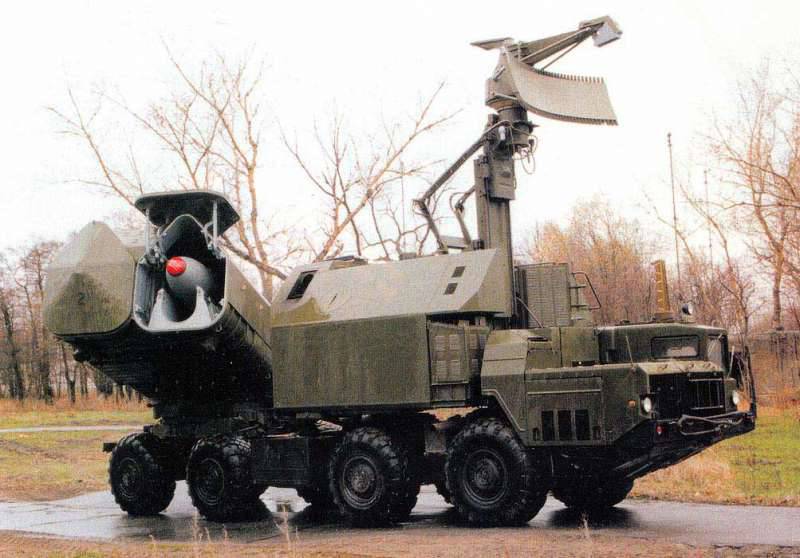
The 3P51 launcher is in a combat position: the radar antenna is raised, the rocket container is open. Photo Rbase.new-factoria.ru
The Rubezh coastal missile systems of both modifications were supplied to all navies of the USSR. In total, several dozen launchers and a significant number of missiles were built and delivered. After the collapse of the Soviet Union, the available complexes were divided between the coastal forces of Russia and Ukraine. The systems of the Baltic Fleet were not divided between the newly formed states, since they were brought to Russian territory in time. According to reports, the Russian fleet currently has at least 16 3P51 machines, which are operated by four separate missile units comprising all the fleets.
It is known that the Rubezh complex was initially considered as a potential commodity for sale to friendly countries. After completing the main supplies in the interests of its own fleet, Soviet industry began the production of export complexes. These systems were sent to the friendly states of the Middle East, North Africa, and Eastern Europe. Among other similar equipment ordered GDR, Romania, Algeria, Syria, Yemen, Libya, etc. In some countries, the "Frontiers" of Soviet manufacture have already been decommissioned, while in others they are still used.
Prolonged operation of such systems can be hampered by the lack of the necessary cruise missiles. The assembly of the П-15М products continued until the 1989 year, after which they were removed from production in favor of newer and more advanced missiles. Thus, at present, all operators of the Rubezh complexes and other systems using the P-15 family of missiles are gradually consuming the latest similar products, which, in addition, complete storage periods.
The coastal missile system "Rubezh" had both advantages and disadvantages. The positive features of this system are visible when compared with its predecessors. So, the new Frontier differed from the Sopka and Redut complexes with a considerably smaller amount of funds: it included only launching a plant and several auxiliary machines. Also a big plus was the use of a launcher with two containers, which gave corresponding advantages over existing systems.
Naturally, it was not without drawbacks. One of the main ones is a relatively small firing range. According to this parameter, the P-15M rocket, which appeared in the mid-sixties, was noticeably inferior to the newer systems that were put into service simultaneously with the Rubezh complex. In addition, over time, there were certain problems with the resistance to interference used by the enemy. Despite its high performance at the time of its appearance, the Termit rocket had become obsolete over several decades of operation and lost all its advantages.
Coastal missile systems 4K51 "Frontier" is still in service with several countries. These systems are used to protect maritime borders and can still solve combat missions. However, their characteristics no longer fully meet the requirements of time, the material part is aging physically, and the number of usable missiles is constantly decreasing. In the foreseeable future, such complexes may be written off and finally replaced with newer analogues. However, over several decades of service, Rubezh complexes have become an important element of coastal defense and deservedly occupy their place in stories domestic missile weapons.
Based on:
http://rbase.new-factoria.ru/
http://vpk-news.ru/
http://warships.ru/
http://militaryparitet.com/
Shirokorad A.B. Weapons of the domestic fleet. 1945-2000. - Minsk: “Harvest”, 2001
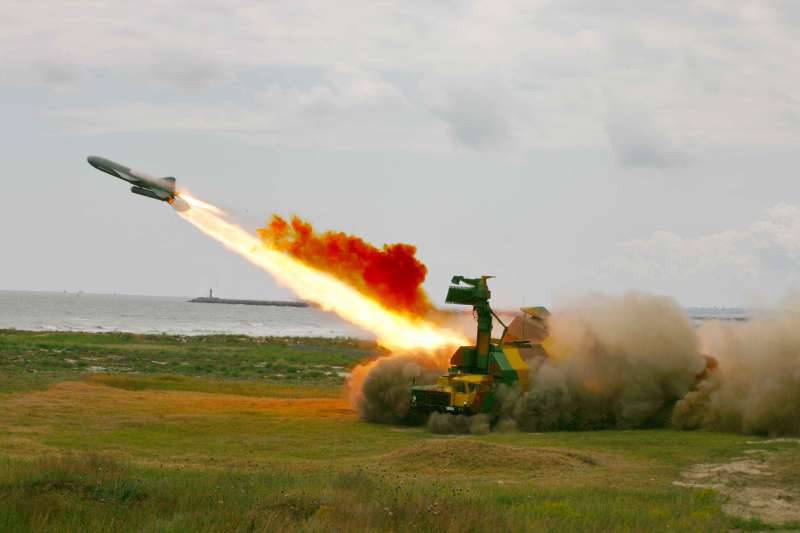
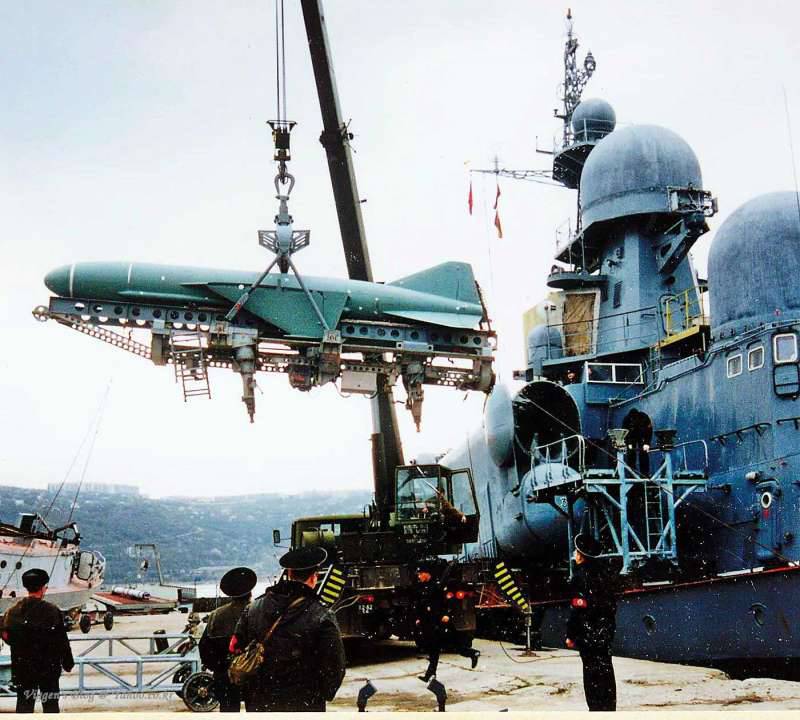

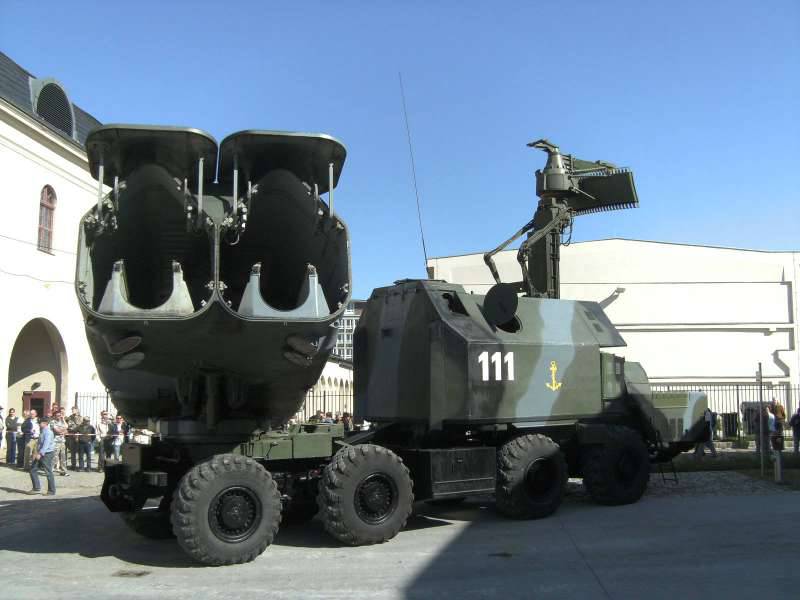
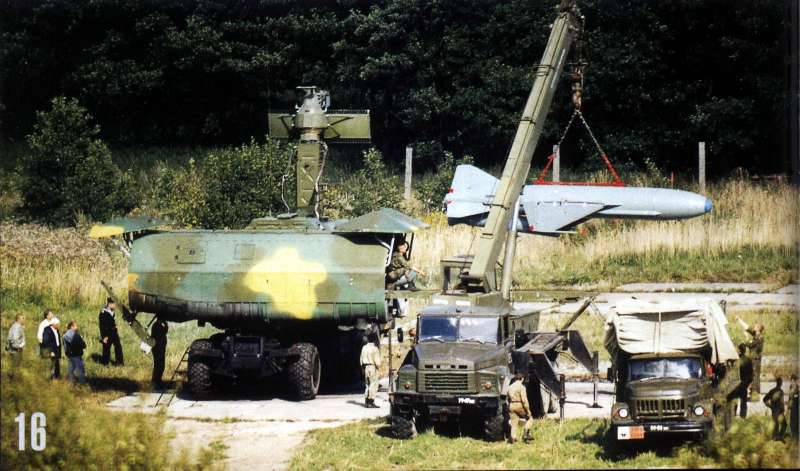
Information